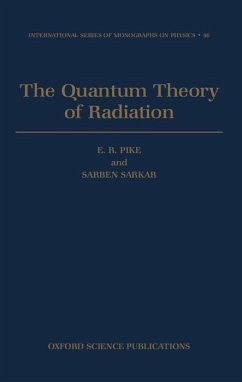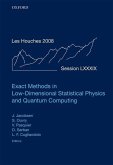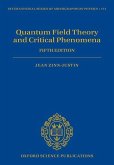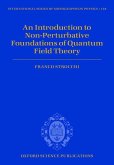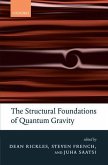After the impressive successes of QED, the limitation of the theory and the necessity of electroweak theory and quantumchromodynamics are discussed. The remaining chapters are devoted to quantum optics inside cavaties. Various approaches to open systems such as master equations are discussed within the context of active systems (e.g. the laser) and passive systems. Semi- classical approximarions are shown to imply a rich non- linear dynamics including chaos for certain parameter regimes. The effect of fluctuations on such non-linear dynamics is also studied. The final chapter is devoted to highly non- classical states of the light field such as photon number, squeezed and two photon entangled states. The latter are studied for the important system of parametric down conversion and the localisation properties of photons are characterised in terms of asympotic tails in photodetection probabilities as a function of time delay. The range of the book has wider benefits. Workers in quantum optics will gain a deeper understanding of the foundations of their subject and field theorists will see concrete examples of open systems, which are beginning to impinge on fundamental theories.
This unique book presents a unified, in-depth study of phenomena in photon-matter interactions over a range of many orders of energy. It provides a thorough treatment of relativistic quantum electrodynamics from the quantum field theoretic approach, together with non-relativistic theory in both confined and unconfined geometries. The predictions of QED have been verified to a greater accuracy than any other physical theory. Moreover QED is a paradigm for other gauge theories, and it is presented in such a way that the generalization to other gauge theories is natural. Gauge and Poincare symmetry properties and the non-existence of a photon wave function are thoroughly discussed. Starting from the Dirac equation, the non-relativistic interaction of the electron with the electromagnetic field is derived as an effective Hamiltonian of multipole expansions. Succeeding chapters fully develop relativistic QED and quantum optics. The limitations of QED and the necessity of electroweak theory and quantum chromodynamics are also discussed, and the final chapters are devoted to quantum optics inside cavities, concluding with a study of highly non-classical states of the light field such as photon number, squeezed and two photon entangled states. The book includes worked examples and exercises. In addition to its wide usefulness for theoretical physicists, this volume will help workers in quantum optics to gain a deeper understanding of the foundations of their subject, and field theorists will find concrete examples of open systems, which are beginning to influence their basic approaches.
This unique book presents a unified, in-depth study of phenomena in photon-matter interactions over a range of many orders of energy. It provides a thorough treatment of relativistic quantum electrodynamics from the quantum field theoretic approach, together with non-relativistic theory in both confined and unconfined geometries. The predictions of QED have been verified to a greater accuracy than any other physical theory. Moreover QED is a paradigm for other gauge theories, and it is presented in such a way that the generalization to other gauge theories is natural. Gauge and Poincare symmetry properties and the non-existence of a photon wave function are thoroughly discussed. Starting from the Dirac equation, the non-relativistic interaction of the electron with the electromagnetic field is derived as an effective Hamiltonian of multipole expansions. Succeeding chapters fully develop relativistic QED and quantum optics. The limitations of QED and the necessity of electroweak theory and quantum chromodynamics are also discussed, and the final chapters are devoted to quantum optics inside cavities, concluding with a study of highly non-classical states of the light field such as photon number, squeezed and two photon entangled states. The book includes worked examples and exercises. In addition to its wide usefulness for theoretical physicists, this volume will help workers in quantum optics to gain a deeper understanding of the foundations of their subject, and field theorists will find concrete examples of open systems, which are beginning to influence their basic approaches.

